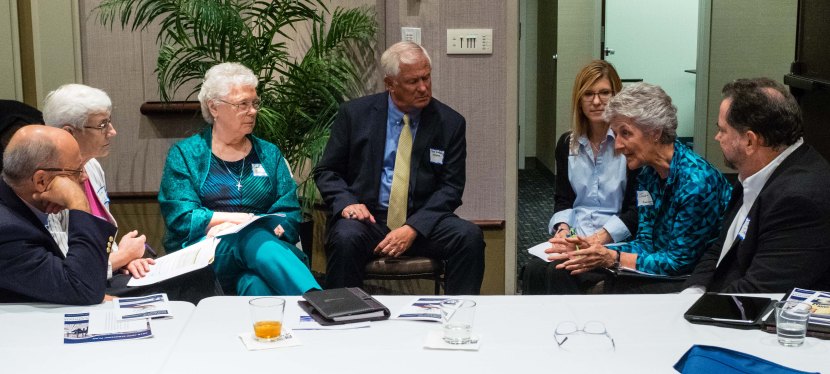Tariq Fancy, BlackRock’s former chief investment officer for sustainable investing, made a startling confession in a recent USA Today editorial:
In essence, Wall Street is greenwashing the economic system and, in the process, creating a deadly distraction. I should know; I was at the heart of it.
Fancy went on: “In truth, sustainable investing boils down to little more than marketing hype, PR spin and disingenuous promises from the investment community.”
It’s quite an indictment from a significant voice in the ESG sector, but, based on my personal experience working for Seventh Generation Interfaith for the past several years, I do not believe that it conveys the whole truth of the matter.
Yes, there are asset management firms that over-hype their ESG product. They slap an ESG label on a fund that screens out certain sectors and perhaps speak to a few companies about their climate actions and sell it at a higher price than non-ESG products. A recent Wall Street Journal article reported 43% higher fees for ESG products in one class of assets. Visit a grocery store, and a higher-priced item with a “Naturally Raised” or “Fresh” label may attract more consumers, even if neither quality is in any measurable sense true. The old Latin adage holds: Caveat Emptor! Buyer beware!
When we look under the hood, so to speak, at many ESG funds, there are reasons to be concerned.
Even as investors demand ESG investments, those funds labeled ESG may not always reflect investor preferences in their proxy voting. Last month, a study from Robeco Asset Management and the Erasmus University of Rotterdam School investigated a decade of proxy voting data, and concluded that large, passive asset managers vote the least in favor of ESG proposals. Further, PRI signatories in the U.S. did not even vote their proxies as well as other U.S. firms that did not describe themselves with an ESG label. Fiona Reynolds, CEO at PRI, recently responded to the report with a commitment to take action. Reynolds went on to give an unusual warning: “being a PRI signatory should not be the only due diligence test for investors.”
Asset owners who rely on negative screens and “ESG” funds can be misled. Vincent Deluard of StoneX authored a recent report entitled “The ESG Bubble: Saving the Planet and Destroying Societies.” Deluard points to blind spots in customary ESG screens. He notes, “companies with a high ESG rating pay a much lower tax rate than their less virtuous peers.” As well, he observed that “ESG funds are biased against humans: the 15 most highly-rated companies employ just 1.9 million workers, versus 5.1 million for the 15 worst-rated ones.” He concludes: “By channeling more money towards these (already wealthy) companies, ESG funds are unconsciously worsening the social and political crisis associated with automation, inequality, and monopolistic concentration.”
While Deluard’s study can cause suspicion of all ESG products, there are hopeful signs on the horizon. Last week, acting SEC chair Allison Herren Lee spoke to the proxy voting issue, saying, “We know investors are demanding ESG investment strategies and opportunities, but funds may not always reflect those investor preferences in their voting” and suggested that the SEC may need to take action on proxy voting disclosure. Further, Gary Gensler, the nominee to lead the Security and Exchange Commission, has indicated that he favors greater ESG disclosures, and the SEC as a whole is making ESG a priority. Most importantly, there are firms that do the hard work. For an asset owner, asking good questions of an asset manager can help discern if the firm is committed to doing this work. [We will soon have a blog post that examines some good questions to ask.]
The faith community, with ICCR leading the way, has pioneered socially responsible investing for fifty years. Many asset managers and advisors who are ICCR members are not doing the greenwashing that Mr. Fancy called out. And SGI members recognize their fiduciary responsibility and power of ownership to change the system for the better. SGI members create value by improving the conduct of portfolio companies and, at the same time, create real world impact for people and planet.








